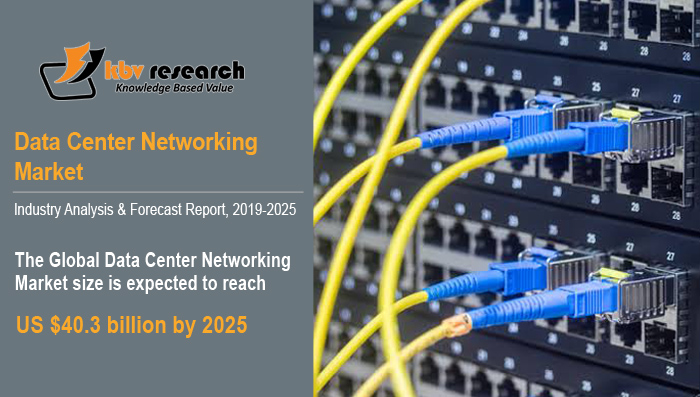
Modern data center networking aims to manage clients with multiple data center workloads. In such a network, servers are the components that provide the necessary services to users (and the programs that run on their behalf).
Responses to API function calls may be the most basic forms of such networking services. Servers can provide applications for users/clients via Web protocols, language platforms, or virtual machines that will provide full desktops to users.
A data center is a facility that centralizes the IT services and resources of an enterprise, as well as where the data is processed, handled and distributed. Data centers store the most critical systems of a network and are essential to streamline day-to-day operations. Therefore, a top priority for organizations is the safety and reliability of data centers and their information.
Although data center designs are different, they can generally be categorized as data centers that are internet-oriented or enterprise-oriented (or “internal”). Internet-facing data centers generally support relatively few applications, are mostly browser-based, and often have undisclosed numbers of users. Enterprise data centers, on the other hand, serve fewer users but host more applications that range from off-the-shelf to custom applications.
Currently, on single computers, few business workloads–and increasingly less product and entertainment workloads–are executed, which implies the need for data center networking. Networks provide a common map for servers, users, applications and middleware to position workload execution and also to control access to the data they generate. The workflow that involves data center networking between resources is the organized work between servers and clients in a network.
Data is shared between servers and users, even though there is no central supervisor of such exchanges for modern data centers. A traditional data center network includes servers that handle workloads and respond to client requests. It also includes switches that link devices together; routers that execute packet forwarding functions, controllers that handle workflows between network devices, and gateways which serve as junctions between data center networks and the wider Internet.
In a software-defined network (SDN), data center workflow dynamics switch to a more effective accommodation of varying workloads. Essentially, the workflow is divided into two categories: the content of documents and media used by clients (the data plane) and the guidance on how this information should be accommodated by the network (the control plane). It allows an SDN controller to make grand changes to how the data plane is mapped, even while a process is underway.
Processes are executed without compromising the control plane and the connections that link the network components together. Nevertheless, enterprises and public services tend to view their data centers in common use as the collection of servers running on-premises they own or rent. But, even this concept is worn off by new realities, the most popular of which is the proliferation of cloud-based services and applications made available to “as-a-service” companies–offered on a subscription basis, or pay-as-you-go basis.
The networks of today need to be incredibly flexible to meet customers' connectivity needs. It is crucial to the success of any organization to be able to access data and services when they are needed. This applies in particular to businesses that rely on multiple suppliers and platforms to provide their customers with services. Institutions leave themselves open to the severe effects of system downtime without inefficiencies in place to ensure network availability.
The 5th-gen technology is finally beginning to roll out in select markets after decades of promises. It has become by far one of the highest-profile trends in data center networking. Telecom carriers already are heavily investing in infrastructure and technologies that will take full advantage of 5G, and any data center that delays in preparing for this trend in the industry may find it difficult to compete. As the reach of 5G networks grows, consumers would expect this innovative technology to provide the lightning-fast service they have been told to expect.
The growing proliferation of devices from the Internet of Things (IoT) has caused many companies to reconsider their network architecture. Since data is limited by physics laws, it takes time for it to travel back and forth to the center of the network, adding latency into the process and weakening device efficiency.
Edge computing architecture that pushes core processing functions nearer to the outer edges of the network where most data is collected and where many users access digital services, enables devices to respond much more quickly based on the data they observe. Whether using neighboring edge data centers to streamline analysis or process information using their internal hardware, using edge computing networks, IoT devices can significantly improve performance.
Click Here For Free Insights: https://www.kbvresearch.com/news/data-center-networking-market/
The bottom line
The data center networking market is significantly taking root. Cloud computing is expected to improve the demand for these technologies through expanded use in various industries over the forecast period. The industry of the data center is in the middle of a massive transformation. Due to the accessibility and availability of the infrastructure for cloud computing and SaaS services, any company can deploy applications and technology with just a few clicks.
It is anticipated that the growing IoT applications will further boost market growth over the coming years. The notion of "center" becomes almost entirely elusive as the essence of data center networking is increasingly disaggregated. Instead of a place where assets are managed and operated, a network of data centers can now be no more substantive than the collection of information technology resources accessible through one another - owned or leased by a business or subscribed to. The Global Data Center Networking Market is projected to surface over the coming years, at a market growth of 12.3% CAGR.